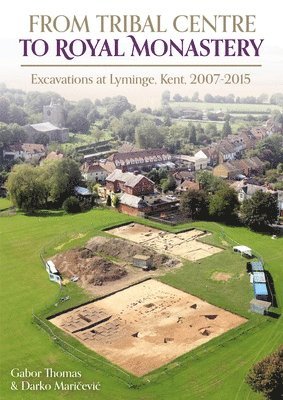Kommande

1549:-
This volume provides an authoritative account of research excavations at Lyminge, Kent, conducted by the University of Reading in collaboration with the Canterbury Archaeological Trust and Kent Archaeological Society, 20082015. The aim of the project was to harness the archaeological potential of Lyminge one of the earliest documented monastic establishments in AngloSaxon Kent to offer new perspectives on the role played by monasteries in the Christianisation of early medieval peoples and landscapes. One of the most distinctive aspects of the project was its scale: addressing the lack of comprehensive schemes of archaeological investigation on comparable AngloSaxon monastic sites, all available spaces within the historic core of the village were targeted with openarea investigation giving a combined areal coverage of 2 acres (8,000m2). Large expanses of early medieval stratification were recovered and Lyminge ranks as one of the most extensively excavated elite/monastic centers of the period. The results offer pioneering perspectives on the complex cultural biographies of early medieval monastic landscapes. A key discovery was a preChristian (5th7th centuries AD) settlement focus offering detailed insights on the antecedent social setting of the monastery. This early occupation climaxed in the construction of a Yeaveringtype great hall complex, the first example of this rare form of elite residence to have been investigated in Kent. Subsequent occupation over the 8th9th centuries was evidenced by an extensive swathe of timber buildings, pits, ditched boundaries and industrial features, together affording a rare view of the domestic and economic infrastructure of a contemporary monastic establishment. Abundant assemblages of artifacts and ecofactual data combined with a refined chronological framework, supported by over 40 radiocarbon dates, charts significant transformations in diet and lifestyle correlating with Lyminges documented emergence as a monastery at the end of the 7th century. The book provides a comprehensive account, analysis, and synthetic interpretation of these discoveries situated at the forefront of interdisciplinary research agendas. The introductory chapters place the project within its scholarly framework, provide essential historical background and regional context, and elucidate a chronological framework for the settlement sequence. A phased description and analysis of the buildings and other settlement remains follows, interwoven with insights obtained from the analysis of artifactual and ecofactual data. The latter receive detailed coverage in a series of chapters authored by independent specialists. A final synthetic discussion pulls together the strands under a series of thematic headings. These are aligned on interdisciplinary research agendas and situate Lyminge within local, regional and supraregional contexts. Themes include the entwinement of elite residences in processes of religious transformation, new approaches to defining monastic signatures in the AngloSaxon settlement record, and fresh perspectives on AngloSaxon Kent as a gateway province and conduit for continental influences and innovations.
- Format: Inbunden
- ISBN: 9798888571637
- Språk: Engelska
- Antal sidor: 336
- Utgivningsdatum: 2026-02-15
- Förlag: Casemate Publishers

